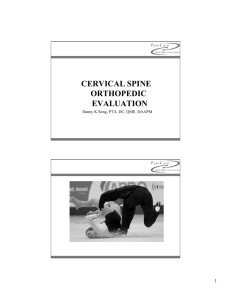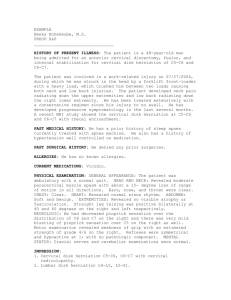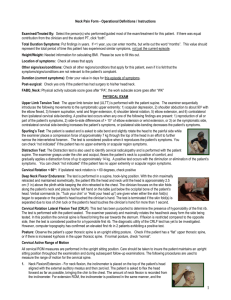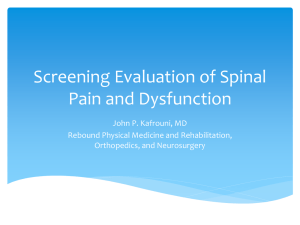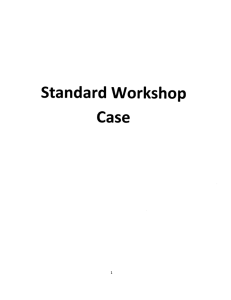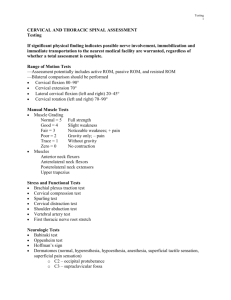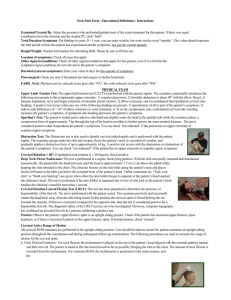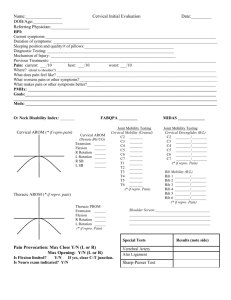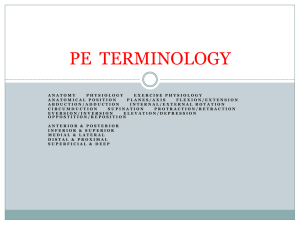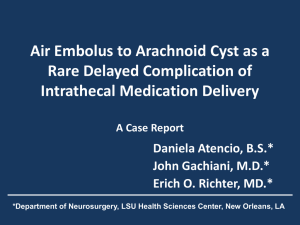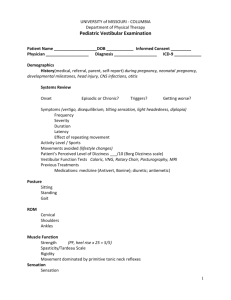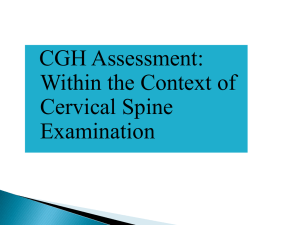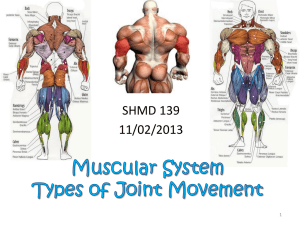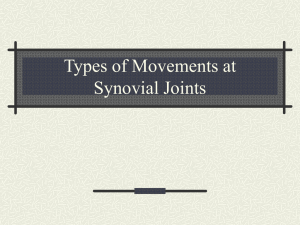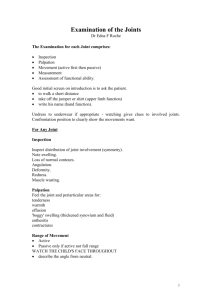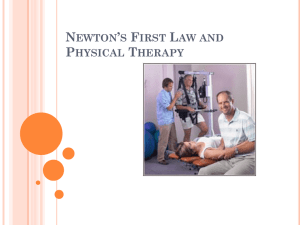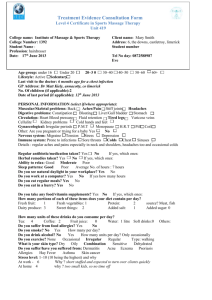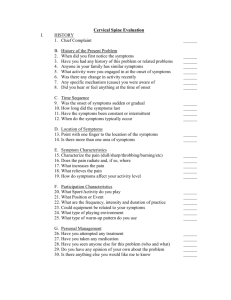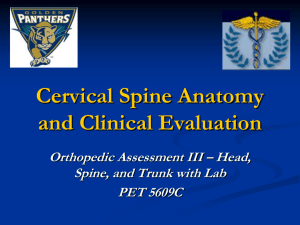Injury Evaluation and Differential Diagnosis
advertisement
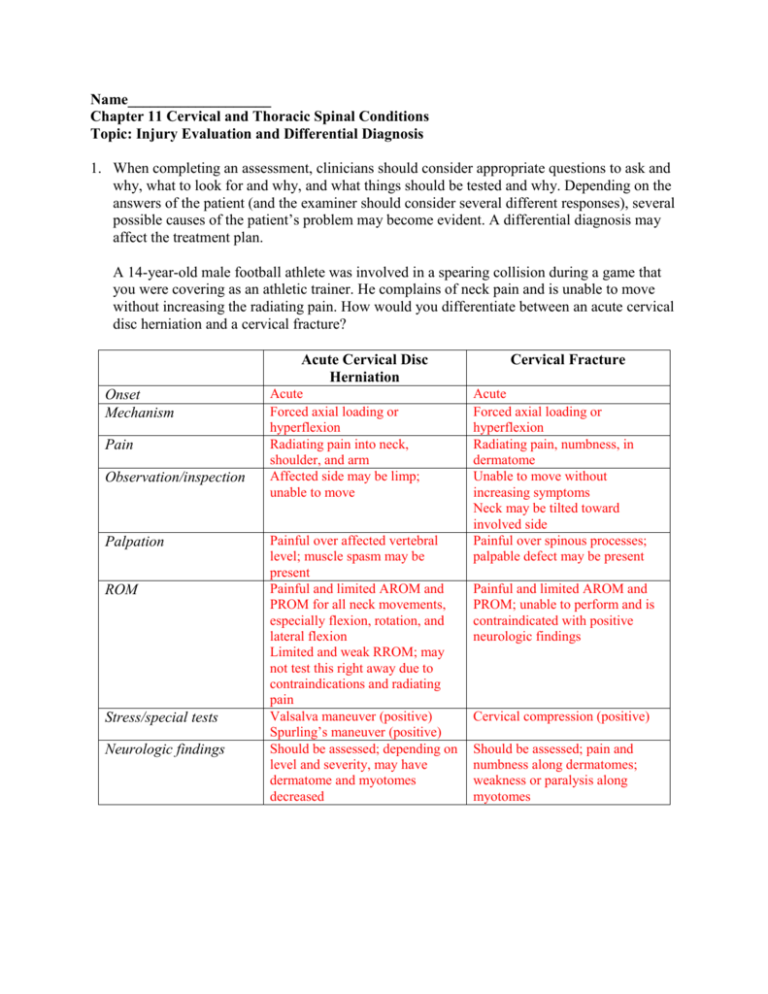
Name___________________ Chapter 11 Cervical and Thoracic Spinal Conditions Topic: Injury Evaluation and Differential Diagnosis 1. When completing an assessment, clinicians should consider appropriate questions to ask and why, what to look for and why, and what things should be tested and why. Depending on the answers of the patient (and the examiner should consider several different responses), several possible causes of the patient’s problem may become evident. A differential diagnosis may affect the treatment plan. A 14-year-old male football athlete was involved in a spearing collision during a game that you were covering as an athletic trainer. He complains of neck pain and is unable to move without increasing the radiating pain. How would you differentiate between an acute cervical disc herniation and a cervical fracture? Acute Cervical Disc Herniation Onset Mechanism Pain Observation/inspection Palpation ROM Stress/special tests Neurologic findings Acute Forced axial loading or hyperflexion Radiating pain into neck, shoulder, and arm Affected side may be limp; unable to move Painful over affected vertebral level; muscle spasm may be present Painful and limited AROM and PROM for all neck movements, especially flexion, rotation, and lateral flexion Limited and weak RROM; may not test this right away due to contraindications and radiating pain Valsalva maneuver (positive) Spurling’s maneuver (positive) Should be assessed; depending on level and severity, may have dermatome and myotomes decreased Cervical Fracture Acute Forced axial loading or hyperflexion Radiating pain, numbness, in dermatome Unable to move without increasing symptoms Neck may be tilted toward involved side Painful over spinous processes; palpable defect may be present Painful and limited AROM and PROM; unable to perform and is contraindicated with positive neurologic findings Cervical compression (positive) Should be assessed; pain and numbness along dermatomes; weakness or paralysis along myotomes Injury Evaluation & Differential Diagnosis 2 2. After completion of the history and palpation components of assessment for a neck injury sustained by a wrestler, an injury is suspected to the sternocleidomastoid or trapezius. Explain testing to confirm this suspicion. Testing should include AROM and RROM for the cervical spine, including neck flexion, extension, lateral flexion, and rotation. Normal ranges are: flexion 80–90; extension 70; lateral flexion 20–45; rotation 70–90. 3. When and why should a scan examination be used as part of a cervical spine assessment? Active movement should not be performed when pain is present over the vertebrae or when motor/sensory deficits are present. If there is no pain over the vertebrae or no motor/sensory deficits, a scan exam can be used to assess general motor function. It can potentially rule out injury at other joints that may be overlooked because of intense pain or discomfort at the primary injury site. 4. Provide the action that corresponds to the nerve root segment. Nerve Root Segment a. C1–C2 b. C3 and CN XI c. C4 and CN XI d. C5 e. C6 f. C7 g. C8 h. T1 Action Tested Neck flexion Lateral neck flexion Shoulder elevation Shoulder abduction Elbow flexion and/or wrist extension Elbow extension and/or wrist flexion Thumb extension and/or ulnar deviation Finger abduction and adduction
